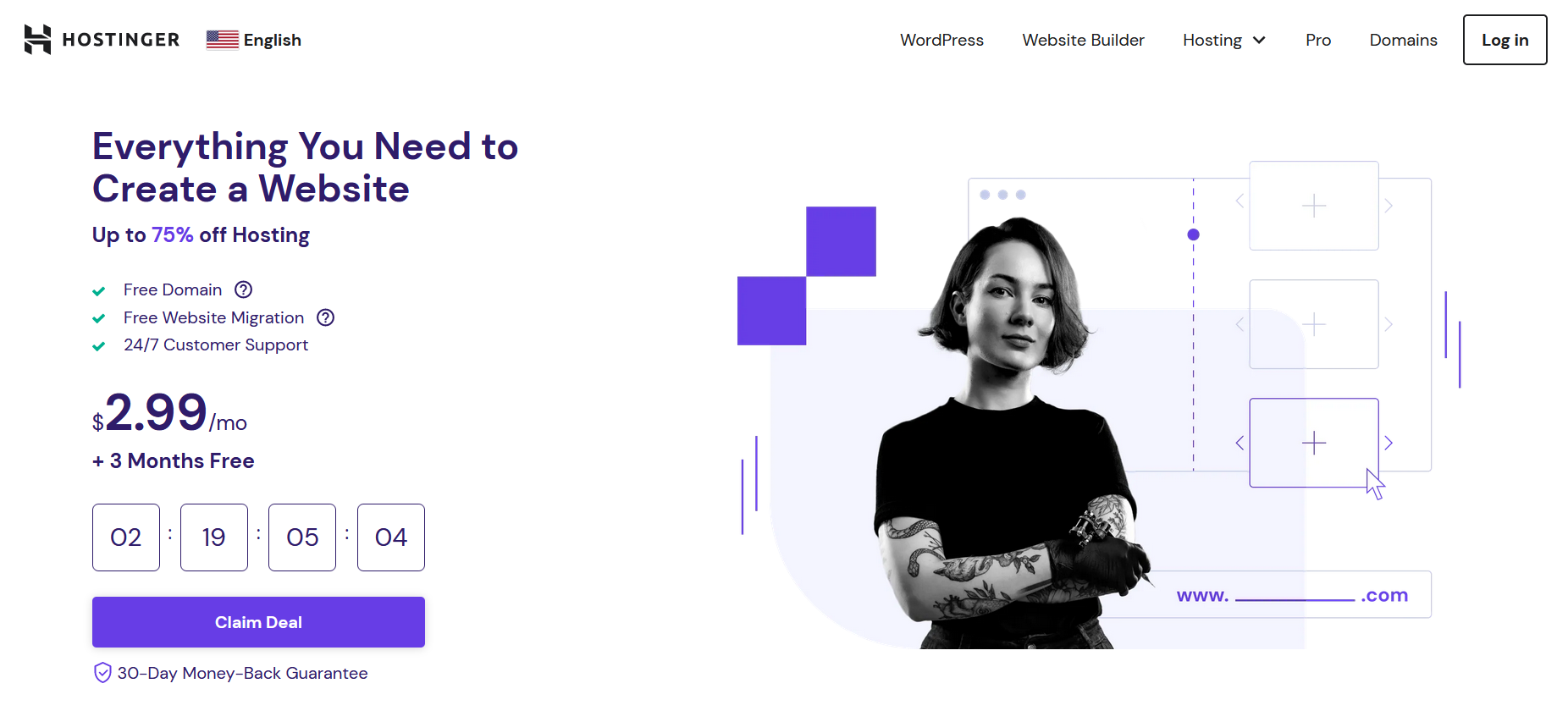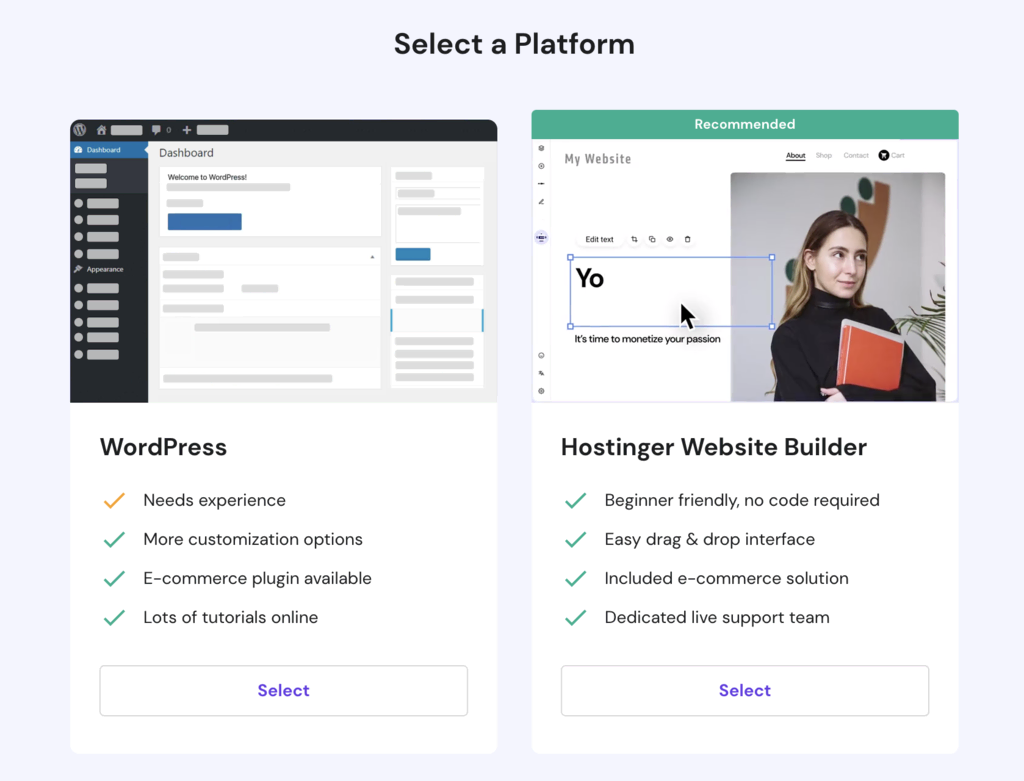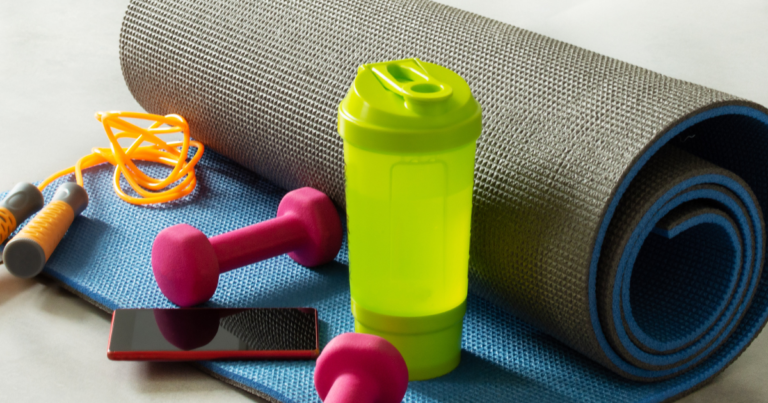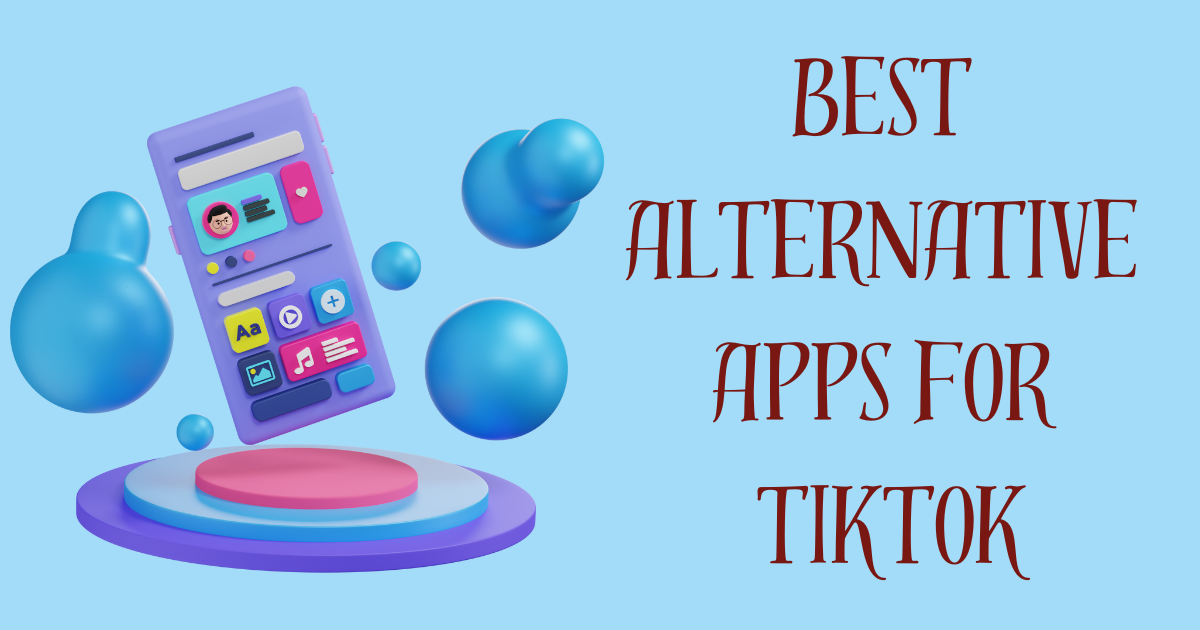Venturing into the world of health and fitness blogging is like embarking on an exhilarating fitness journey – it requires enthusiasm, dedication, and a sprinkle of creativity.
If you’re wondering how to start a fitness blog, imagine it as your first day at a new gym. There’s equipment everywhere, seasoned pros around every corner, but here you are, ready to carve out your own spot in this vibrant community.
Starting a successful fitness blog is an exciting way to share your passion for health and wellness, while connecting with like-minded individuals. It’s about more than just flexing your muscles; it’s about flexing your storytelling abilities and inspiring others. You’ll be joining ranks with other fitness bloggers who started just like you, with a simple desire to share and connect.
So, let’s skip the generic pep talk. You’re not here to be told that ‘you can do it’—you already know that. Instead, you’re here for the real, actionable steps to turn your fitness enthusiasm into a digital powerhouse. From the intricacies of setting up your blog to navigating the world of content creation, this guide is your roadmap to blogging success.
Get ready to lace up your sneakers, metaphorically speaking, and let’s jump into the world of fitness blogging. By the end of this guide, you’ll be ready to not just join the conversation, but lead it.
What is a Fitness Blog, and Why Start One?
In the ever-evolving world of the fitness industry, a health and fitness blog stands as a digital beacon of knowledge, inspiration, and community. But what exactly is a fitness blog, and why should you consider starting one?
At its core, a fitness blog is more than just an online journal or a collection of workout tips. It’s a platform where you, as a health and fitness blogger, can share your journey, insights, and expertise with an audience that shares your passion for health and wellness. Whether it’s through engaging articles, instructional videos, or inspiring success stories, fitness blogs create a space for both personal and communal growth.
The benefits of diving into this vibrant world are manifold. On a personal level, running a fitness blog can be a journey of self-discovery and development, pushing you to stay abreast of the latest trends and research in the fitness realm.
From a community perspective, it allows you to connect with like-minded individuals, fostering a sense of belonging and mutual support. Moreover, as you carve out your unique voice in this bustling digital landscape, there’s also the potential for monetary gain.
Whether through sponsored content, affiliate marketing, or selling personalized fitness plans, fitness blogs can open doors to various income streams. So, in essence, starting a health and fitness blog is not just about sharing your fitness journey; it’s about inspiring others, building a community, and potentially even turning your passion into a profession.
Finding Your Unique Angle

In the health and fitness industry, where countless voices clamor for attention, finding your unique angle is crucial to make your own fitness blog stand out. Think of your blog as a personal fitness routine: just as no two routines are identical, your blog should reflect your individuality.
This begins with choosing a niche – a specific area of the fitness world that you are passionate about and knowledgeable in. It could be anything from yoga to high-intensity interval training, from vegan fitness diets to senior fitness strategies. The key is to focus on an area that resonates deeply with you, as this authenticity will shine through in every blog post you create.
But how do you pinpoint this unique angle? Start by considering what aspects of fitness you are most passionate about. What topics do you find yourself constantly reading or talking about? Are there areas where you have personal experience or expertise? These reflections can lead to a goldmine of fitness blog ideas that can set your content apart.
Also, take a look at what other fitness blogs are doing. Identify gaps in their content or perspectives that you can fill with your unique insights and experiences. Remember, your unique angle is not just a niche topic; it’s your voice, your experiences, and your perspective – all of which make your blog a unique and valuable part of the fitness community.
Let’s Proceed With The Technical Setup

Embarking on the journey of creating a general fitness blog requires some technical setup, but fear not – it’s less complicated than mastering a perfect squat form!
Let’s break down these steps one after the other:
Step 1 – Choose a Blogging Platform: Why WordPress is a top choice for fitness bloggers.
When it comes to selecting a blogging platform for your fitness business, the choice can be as crucial as picking the right workout routine for your goals. As a fitness blogger aiming to create a successful blog, WordPress emerges as a top contender, and for good reason.

This platform offers a blend of user-friendliness and flexibility, making it ideal for both beginners and seasoned bloggers. Its intuitive interface allows you to focus more on your content and less on navigating technical complexities. For a fitness blogger, this means more time crafting inspiring workout guides, nutritional tips, and personal fitness stories, and less time tangled in web development intricacies.
Moreover, WordPress is highly customizable, a feature that’s invaluable in the fitness blogging world. With a vast array of themes and plugins, you can tailor your site to perfectly reflect your fitness brand’s ethos and aesthetic. Whether you’re looking to create a sleek, minimalist look or a vibrant, energetic feel, WordPress provides the tools to bring your vision to life.
Additionally, its robust SEO capabilities ensure that your content reaches a wider audience, increasing the visibility and impact of your fitness blog. These features, combined with the platform’s reliability and scalability, make WordPress an ideal choice for fitness bloggers looking to establish and grow their online presence in the fitness business.
Step 2 – Select a Domain Name: Tips on picking a memorable and SEO-friendly domain.
Selecting a domain name is basically choosing a name for your new fitness blog; it’s exciting, critical, and sets the tone for its identity.
A great fitness blog name needs to be memorable, easy to type, and resonate with your niche audience. But there’s more to it than just catchy words – it’s also about being strategic with search engine optimization (SEO). A name that’s SEO-friendly increases the likelihood of your new fitness blog appearing higher in search engine results, making it easier for fitness enthusiasts to find you.
When brainstorming names, consider incorporating keywords related to your fitness niche, but keep it unique and brandable.
Once you’ve got a few names in mind, the next step is to check domain availability. This can easily be done through a domain registrar or hosting services like Hostinger. They provide tools to see if your chosen name is available or if it’s already taken.
Remember, your domain name is more than just a web address; it’s the first impression and a critical part of your brand’s online presence, so choose wisely!
Step 3 – Select The Best Web Host In The Game – Hostinger
When it comes to launching your new fitness blog, selecting the right web hosting provider is similar to choosing the best gym for your workout – it needs to fit your needs and goals. While there are several hosting companies out there, Hostinger stands out, especially for newbie bloggers.

Its appeal lies in its user-friendly interface, affordable pricing, and reliable service, making it an ideal choice among other hosting companies. To start, navigate to Hostinger’s website and explore the different hosting plans available. As a new blogger, you’ll likely find their shared hosting plans more than sufficient – offering a balance of performance, storage, and bandwidth at a budget-friendly price.
Once you’ve selected a plan that aligns with your blogging needs, the sign-up process is straightforward. Hostinger guides you through every step, from choosing your plan to finalizing the payment.
After signing up, you’ll have access to Hostinger’s control panel, which is intuitive and easy to navigate, even for those who are new to web hosting. This is where you’ll manage your website’s backend, from setting up emails to monitoring your site’s performance.
The beauty of Hostinger is that it simplifies these technical aspects, allowing you to focus more on creating content for your fitness blog. Their customer support is also noteworthy; should you encounter any issues or have questions, their team is readily available to assist. This level of support and ease of use sets Hostinger apart as a hosting company, making it a top choice for bloggers embarking on their digital journey in the fitness world.
Step 4 – Install WordPress on Hostinger: Navigating the one-click installation process.
For aspiring fitness bloggers and online personal trainers, creating a standout presence in the digital world is paramount, and this begins with setting up your blogging platform.
Hostinger simplifies this process, especially for WordPress, which is a go-to choice for many fitness sites and other blogs. The reason behind Hostinger’s popularity among newbie bloggers is its one-click WordPress installation feature. This process is as straightforward as it sounds, removing the technical barriers that often overwhelm beginners.
To start, once you’re logged into your Hostinger account, you’ll find the option to install WordPress under the ‘Website’ section. A simple click initiates the installation process, where Hostinger’s intuitive setup wizard guides you through each step.

This ease of setup is a game-changer, especially if you’re an online personal trainer or fitness enthusiast venturing into blogging for the first time. You don’t have to juggle between complicated installation guides or technical jargon. Instead, Hostinger allows you to focus on what truly matters – creating engaging content and building your fitness brand.
Additionally, by choosing WordPress, you align your blog with a platform that’s renowned for its robust features, customizable designs, and SEO-friendly architecture. This combination of Hostinger’s user-friendly hosting service and WordPress’s versatile platform creates a powerful starting point for your fitness blog, ensuring you have the tools and support needed to stand out in the crowded digital fitness space.
Step 5 – Select the Perfect Theme: How to choose and install free themes that resonate with your fitness blog’s vibe
A critical step in starting a fitness blog is giving it a visual identity that resonates with your message and audience, and this is where choosing the right WordPress theme comes into play.

The Astra Theme is an excellent choice for anyone in the digital marketing and fitness blogging sphere. It’s not just about aesthetics; Astra is known for its speed and compatibility with search engines, ensuring your WordPress website ranks well and loads quickly – both crucial factors in keeping visitors engaged.
When you’re on your WordPress dashboard, navigating to the ‘Appearance’ section and then ‘Themes’ allows you to explore a variety of free themes. However, Astra stands out for its sleek design, customizable layout options, and seamless integration with essential plugins, making it a top pick for fitness blogs.
Installing Astra is as straightforward as selecting it from the theme directory and clicking ‘Install.’ Once activated, you can start customizing it to match the vibe of your fitness blog.
Astra offers a range of pre-built templates, which are a boon for beginners, allowing you to get a professional-looking site up and running in no time. This theme supports a range of features and widgets that are particularly beneficial for fitness blogs, such as areas for workout routines, nutrition tips, and client testimonials.
Additionally, its responsive design ensures that your site looks great on all devices, an essential aspect of digital marketing today. By choosing Astra, you’re not only making your blog visually appealing but also setting a strong foundation for its performance on search engines, a key element when starting a fitness blog.
Step 6 – Initial WordPress Setup: Basic configurations for optimal performance and SEO.
After installing WordPress for your health blog, the initial setup is a critical step to ensure your site is optimized for both your target audience and search engines. This stage is where the magic of digital marketing begins to take shape.
Start by accessing the WordPress dashboard to configure basic settings. First, set your site title and tagline, which not only introduce your blog to visitors but also play a role in search engine rankings. Keep these clear, concise, and reflective of your health blog’s focus.
Next, navigate to the ‘Reading’ settings to ensure your homepage displays your latest posts, keeping your content fresh and engaging for your audience.
Another vital component is setting up permalinks, which are the URLs for your blog posts. In the ‘Permalinks’ settings, choose a structure that includes the post name, as this is more SEO-friendly and easier for your audience to understand. This small change can significantly impact how well your content performs on search engines.
Additionally, consider installing SEO plugins like Rank Math or All in One SEO, which guide you through optimizing each post for better visibility. These plugins provide actionable insights on how to improve your content for SEO, such as keyword usage, readability, and meta descriptions.
Lastly, don’t forget to set up categories and tags. These not only help organize your content on your site but also assist your readers in navigating your health blog and finding the content that interests them. Proper categorization and tagging are also favorable for SEO, as they provide a structure that search engines can easily understand and index.
By carefully configuring these basic elements, you’re setting your WordPress site up for success, ensuring it’s not only appealing to your target audience but also positioned well on search engines.
Now, Let’s talk Content Creation

At the heart of your journey to start a fitness blog is content creation, the core element that will attract and retain your audience. When planning content for your own blog, it’s essential to strike a balance between what you’re passionate about and what your audience seeks. This is where keyword research comes into play.
By understanding what your audience is searching for – be it fitness advice to lose weight, workout routines, or healthy eating tips – you can tailor your content to meet their needs. Tools like Google Keyword Planner can help you identify popular search terms related to fitness, which can then inspire a range of content ideas.
Once you have a list of potential topics, it’s time to think about the types of posts you’ll create. Your fitness blog can feature a mix of written blog posts, YouTube videos, infographics, and even downloadable workout plans. Remember, variety keeps your audience engaged and coming back for more.
It’s also beneficial to include internal links in your posts, connecting them to other relevant content on your blog. This not only helps with SEO but also encourages readers to explore more of your site.
Authenticity and relatability are your secret weapons in fitness blogging. Share your personal experiences, whether it’s about your own weight loss journey, challenges you’ve faced, or successes you’ve celebrated. This personal touch transforms a simple blog post into a relatable story that resonates with your readers.
Additionally, a content calendar is invaluable in maintaining consistency, which is key in building a loyal following. Plan your posts in advance, considering factors like seasonality (e.g., “summer beach body workouts” or “winter home exercises”), upcoming events, or trending topics in the fitness world. Regularly updating your blog with fresh, relevant content not only keeps your audience engaged but also signals to search engines that your site is a current and valuable source of fitness information.
In summary, creating engaging content for your fitness blog involves a blend of strategic planning, keyword research, variety in content types, personal storytelling, and consistent scheduling. This approach ensures your blog remains a go-to resource for those looking to improve their fitness and health.
How to Grow Your Audience

Growing your audience is a crucial step in establishing a successful fitness blog. It’s not just about sharing your knowledge as a fitness professional; it’s also about reaching the right people and making your mark in the world of health blogs.
Strategies for Driving Traffic to Your New Blog
To drive traffic to your blog, start by embracing the power of email marketing. Create a subscription option on your blog to collect email addresses and send regular updates, newsletters, or exclusive tips to your subscribers. This personal touch can significantly increase engagement and return visits.
Another effective strategy is to write guest posts for established health and fitness blogs. This exposes your blog to a wider audience and helps establish your credibility. When crafting these posts, focus on delivering value and include a call to action directing readers to your blog.
You can also offer free or paid webinars on topics relevant to your blog’s niche. This can drive traffic to your blog and establish you as an authority in your field.
Also, never underestimate the importance of SEO. Utilize keyword research to optimize your blog posts, making them more visible on search engines and thus attracting organic traffic. If budget allows, use PPC advertising through Google AdWords or social media platforms to target specific audiences and drive traffic to your blog.
Using Social Media Effectively to Promote Your Blog
Social media is an invaluable tool for promoting your fitness blog. Platforms like Instagram, Facebook, and Twitter, now X, are not just channels for sharing content; they’re communities where you can engage directly with your target audience.
Share engaging snippets, fitness tips, and behind-the-scenes glimpses of your fitness journey. Utilize stories and live sessions to connect on a more personal level.
Additionally, creating and sharing how-to guides or workout videos can be particularly effective, especially when they’re easy to follow and provide real value. Remember, consistency is key on social media – regular posts keep your audience engaged and help attract new followers who are interested in fitness and health.
By implementing these strategies, you can effectively grow your audience, increase traffic to your blog, and enhance your reputation as a knowledgeable fitness professional.
SEO for Fitness Blogs

In the dynamic world of fitness blogging, understanding and implementing SEO is crucial for your blog’s visibility and success. Whether you’re just figuring out how to start a fitness blog or looking to optimize an existing one, mastering SEO can significantly boost your presence on search engines.
SEO for fitness blogs involves a combination of strategies tailored to your unique content and audience. Here are a few ideas and key practices to help make your fitness blog more discoverable:
- Keyword Research: Identifying the right keywords is the cornerstone of SEO. Use tools like Google Keyword Planner to find popular search terms related to fitness topics. Incorporate these keywords naturally in your blog posts, titles, and meta descriptions to improve your search rankings.
- Quality Content: Search engines favor content that is valuable and relevant to users. Create high-quality, informative posts that address common questions or concerns in the fitness community. This not only helps with SEO but also establishes your blog as a trustworthy source of information.
- Optimize Images: Since fitness blogs are often image-heavy, ensure all images are optimized for the web. Use descriptive file names and alt tags with relevant keywords. This helps search engines understand and index your images, improving the overall SEO of your page.
- Mobile Responsiveness: With more users accessing blogs from mobile devices, ensure your site is mobile-friendly. Most blogging platforms offer responsive design templates, but it’s always good to test your site on various devices to ensure a seamless user experience.
- Internal Linking: Linking to other posts within your blog can improve SEO by keeping readers engaged and reducing bounce rates. It also helps search engines crawl your site more effectively, understanding the structure and content of your blog.
- Backlinking: Getting other reputable websites to link to your blog can significantly boost your SEO. Consider guest posting on other fitness sites or collaborating with fitness influencers to build your backlink profile.
- Consistent Blogging: Regularly updating your blog with fresh content signals to search engines that your site is active and relevant. Set a consistent blogging schedule to keep your content current and engaging.
- Use of Tags and Categories: Properly categorizing your posts and using tags can help organize your content and make it easier for search engines to understand your blog’s structure.
By implementing these SEO practices, you can increase the visibility of your fitness blog on search engines, attracting more readers and solidifying your presence in the online fitness community.
Monetization Strategies for Your Fitness Blog

As a personal trainer or fitness enthusiast, once you start writing and growing your audience, monetizing your blog can be a rewarding next step. Not only does it offer a potential source of passive income, but it also allows you to expand your brand and reach.
However, it’s important to approach monetization with ethical considerations in mind, especially when promoting products or services.
Affiliate Marketing:
This is one of the most popular ways to monetize a fitness blog. You can partner with brands related to fitness equipment, supplements, or health products. By including affiliate links in your blog posts or social media, you earn a commission for every sale made through these links.
It’s crucial to only promote products you genuinely believe in and have tested yourself, maintaining trust with your audience.
Selling Digital Products:
As a fitness expert, you can create and sell digital products like eBooks, workout plans, or nutrition guides. These products provide value to your audience while generating income.
Make sure these products are of high quality and cater to the needs and interests of your audience.
Offering Online Coaching:
Leveraging your expertise as a personal trainer, you can offer personalized coaching or fitness consultations online. This not only serves as a direct income stream but also strengthens your relationship with your audience.
Running Sponsored Content:
Collaborate with fitness brands for sponsored blog posts or social media content. Ensure transparency with your audience by disclosing sponsored content. It’s important to partner with brands that align with your blog’s values and message.
Advertising:
Display ads can be a source of revenue, especially once your blog has significant traffic. Platforms like Google AdSense can be a good starting point. Be mindful of the ad placement and quantity to avoid hampering the user experience on your blog.
Hosting Webinars and Workshops:
Organize paid webinars or workshops on specific areas of fitness. These can be detailed deep dives into subjects you are knowledgeable about, providing value to participants while generating income.
Ethical Considerations:
When monetizing your blog, always prioritize your audience’s trust. Be transparent about affiliate links, sponsored content, and the nature of your promotions. Avoid endorsing products or services you haven’t personally vetted or believe in.
By exploring these avenues for making money, your fitness blog can evolve into more than just a platform for sharing content; it becomes a sustainable business that adds value to both your life and that of your readers.
Engagement and Community Building in Fitness Blogging
When you delve into how to start a fitness blog, you quickly realize that it’s not just about writing a great blog post; it’s about fostering a community.
Engagement with your readers and building a robust community are the cornerstones of a successful health and fitness blog. This connection is what will keep your audience coming back for more, transforming occasional visitors into loyal followers.
- Respond to Comments and Messages: Make it a habit to actively engage with comments on your blog posts and social media accounts. Acknowledging and responding to your readers’ thoughts and questions shows that you value their input, encouraging more interaction.
- Share Training and Health Advice: Regularly sharing valuable training and health advice is crucial. However, go beyond just sharing information; personalize it. Share stories of how specific training advice has worked for you or your clients. This adds authenticity to your advice and makes your content relatable.
- Create Interactive Content: Incorporate polls, quizzes, or challenges in your blog posts or on your social media platforms. This interactive content can be a fun and engaging way for your audience to connect with your blog’s theme.
- Host Live Q&A Sessions: Utilize platforms like Instagram or Facebook Live to host Q&A sessions. These live interactions provide a direct way to engage with your audience in real time and address their queries or discuss relevant topics.
- Encourage User-Generated Content: Invite your readers to share their own fitness journeys, success stories, or how they implemented your advice. Featuring such user-generated content on your blog or social media channels can build a sense of community and belonging.
- Offer Exclusive Content or Groups: Create an exclusive email list or a private social media group where you share content that’s not available to the general public. This exclusivity can make members feel valued and foster a tighter-knit community.
- Regularly Update Your Blog: Consistency in posting new content is key. Whether it’s new blog posts, newsletters, or social media updates, regular posting keeps your audience engaged and gives them a reason to check your blog regularly.
- Feedback and Surveys: Occasionally, conduct surveys or ask for feedback about your blog. This not only provides you with valuable insights for improvement but also makes your readers feel like they are a part of your blog’s growth journey.
Fostering engagement and building a community requires effort and consistency, but the rewards are manifold. Not only does it increase the loyalty of your audience, but it also enriches the overall experience of running a fitness blog. It’s about creating a space where both you and your readers can share, learn, and grow in the pursuit of health and fitness.
How To Maintain Consistency in Your Fitness Blog
Maintaining a steady stream of blog content is a pivotal aspect of how to start a fitness blog, ensuring that all the effort you put into your fitness business yields long-term results.
Consistency is key to building and retaining an audience, but it also requires a fine balance with your personal fitness goals and daily life. Here’s an ultimate guide to help you stay on track:
1. Use a Content Calendar:
Create a content calendar. This is an essential tool for planning and scheduling your posts in advance. It allows you to organize your ideas, seasonal topics, and any recurring themes.
A well-structured calendar ensures that you always have content lined up, preventing last-minute rushes and maintaining a consistent posting schedule.
2. Employ Batch Content Creation:
Dedicate specific days to content creation. By batching the creation of blog posts, videos, or social media updates, you can produce several pieces of content at once. This approach saves time and reduces the daily pressure of coming up with new content.
3. Make use of Automation Tools:
Utilize content scheduling tools. Automation tools allow you to schedule posts to go live at predetermined times. This means you can prepare your content in advance and have it posted automatically, ensuring your blog stays active even when you’re busy.
4. Delegate and Outsource:
Consider outsourcing or delegating some aspects of your blog. If graphic design, editing, or social media management are taking too much of your time, hiring a freelancer can help you focus more on creating content and managing your fitness business.
5. Set Realistic Goals:
Be realistic about your blogging frequency. If you’re balancing blogging with a full-time job or personal commitments, it’s better to post quality content once a week rather than pushing for daily posts that may compromise quality or your well-being.
6. Stay Inspired and Informed:
Keep yourself inspired and informed about the latest in fitness and blogging. Regularly reading other fitness blogs, attending webinars, or participating in blogging communities can provide fresh ideas and keep your motivation high.
7. Personal Time Management:
Integrate blogging with your personal fitness routine and daily life. For instance, if you’re writing about a specific workout, incorporate it into your own routine. This not only gives you first-hand experience to write about but also helps you stay fit.
8. Regular Review and Adaptation:
Periodically review your blogging strategy. Look at what’s working and what’s not, and be willing to adapt. Maybe your audience responds better to certain types of posts, or perhaps you find certain times of the year busier than others. Adjust your strategy accordingly.
By following these strategies, you can ensure that your blog remains a dynamic and consistent part of your fitness business, reflecting all the effort and passion you put into it.
Learning from Analytics in Fitness Blogging

When you embark on the journey of how to start a fitness blog, delving into the world of analytics is a pivotal step in evolving and refining your approach. For any general fitness blog, especially when it’s part of a broader fitness business, understanding and utilizing analytics can be a game-changer.
These tools provide a wealth of information about who your audience is, what content they prefer, how they interact with your blog, and where your traffic comes from. By analyzing this data, you gain insights into your audience’s behavior and preferences, which is invaluable in shaping your content strategy.
Imagine analytics as a compass guiding your fitness blog. It shows you which topics resonate most with your readers, the types of posts that drive the most engagement, and even the best times to publish your content.
For instance, you might discover that your how-to guides on beginner workouts receive more traffic and engagement compared to advanced training techniques. This insight can direct you to focus more on content for beginners.
Similarly, analytics can reveal if certain posts lead to higher bounce rates, indicating that the content might not be meeting your audience’s expectations or needs.
Furthermore, analytics help in optimizing your blog for better search engine performance. By understanding which keywords are bringing in traffic, you can tailor your future posts to include these terms, boosting your visibility on search engines. This aspect is crucial in a competitive space like the fitness industry, where standing out in search results can significantly impact your blog’s success.
However, it’s important to remember that while analytics provide valuable data, they should be combined with your understanding of your audience and your unique voice as a fitness blogger. It’s about finding the right balance between data-driven insights and the authentic content that prompted you to start a fitness blog in the first place.
Regularly reviewing your analytics and adapting your content strategy accordingly ensures that your fitness blog remains relevant, engaging, and successful. It’s about continuously learning, evolving, and growing alongside your readers, all while staying true to the core values of your fitness business.
How To Scale Up Your Fitness Blog

As your fitness blog begins to gain traction and build a dedicated following, considering how to effectively scale up becomes essential for maintaining a successful fitness blog.
Expansion is not just about reaching a larger audience, but also about enriching and diversifying the content you offer. This phase is an exciting opportunity to explore new blog ideas and delve deeper into your fitness niche, providing your readers with even more value and variety.
One of the best advice for scaling up is to diversify your content. If your blog has primarily focused on written posts, consider integrating other formats like videos, podcasts, or infographics. This not only appeals to a wider range of audience preferences but also keeps your content fresh and engaging. You could start a YouTube channel to complement your blog, offering workout tutorials or live Q&A sessions, thereby tapping into a broader audience base.
Expanding into new content areas within your fitness niche can also invigorate your blog. If you’ve primarily been offering training advice, consider branching into related topics like nutrition, mental health, or fitness technology. This approach not only attracts new readers but also provides your existing audience with a more holistic view of fitness and wellness.
Another aspect of scaling up is improving your blog’s technical aspects. As your traffic increases, ensure your hosting can handle the increased load. You might also want to refine the design and functionality of your blog to enhance user experience.
Collaborations and partnerships can play a significant role in scaling up. Partnering with other fitness bloggers, brands, or influencers can open up new avenues for content and increase your blog’s reach. Guest posting on other blogs or inviting guest writers to your blog can introduce your content to different audiences.
Lastly, always keep an eye on the latest trends in the fitness and blogging world. Being adaptable and staying up-to-date with new platforms, tools, and content strategies can give you an edge in an ever-evolving digital landscape.
By continuously exploring new ideas, expanding content areas, and enhancing your blog’s functionality, you can ensure that your fitness blog not only grows in size but also in value and influence within the fitness community.
Final Thoughts on How to Start a Fitness Blog

As we wrap up this comprehensive guide on how to start a fitness blog, let’s take a moment to recap the journey you’re about to embark upon.
From the initial steps of carving out your unique niche in the fitness world to setting up your blog with the right technical backbone, each phase is a building block toward establishing a successful platform.
We’ve navigated through the intricacies of creating engaging content, strategies for growing your audience, and the essentials of SEO that will make your blog shine in search engine results.
Beyond the screen, we delved into the art of community building, the importance of consistent content updates, and the insightful world of analytics, all culminating in scaling up your blog to new heights.
As a personal trainer or fitness enthusiast stepping into the digital realm, remember, this journey is as much about personal growth as it is about sharing your passion for fitness. Each blog post you create, every interaction with your readers, and every new strategy you implement is a step forward in your journey.
The path to becoming a recognized voice in the fitness blogging community is filled with learning and opportunities.
So, here’s to you, the future architect of a thriving fitness blog. May your journey be filled with inspiring stories, valuable lessons, and a community that grows stronger with every post.
Take that first step with confidence, enthusiasm, and the knowledge that you have the tools to create something truly impactful. Your voice has the power to inspire, motivate, and guide others on their fitness journeys. It’s time to share it with the world.
Frequently Asked Questions About Fitness Blogging

Q: Do fitness blogs make money?
Yes, fitness blogs can be monetized and can indeed make money. Through various strategies such as affiliate marketing, sponsored content, selling digital products like workout plans, or offering online personal training services, fitness bloggers can generate income. The key is to build a substantial audience and maintain consistent, high-quality content.
Q: Is it worth starting a fitness blog?
Absolutely. Starting a fitness blog can be incredibly rewarding, both personally and professionally. It allows you to share your passion for fitness, help others on their health journey, and can even become a source of income. It’s also a great way to build your personal brand, especially if you’re a fitness professional.
Q: How to earn $1,000 from a blog?
Earning $1,000 from a blog involves diversifying your income streams. This might include placing ads on your blog, participating in affiliate marketing programs, selling your own products or services, or writing sponsored content.
Consistently growing your audience and improving your blog content are crucial steps toward reaching this financial goal.
Q: What does a fitness blogger do?
A fitness blogger creates content related to health and fitness. This can include writing articles, creating workout videos, sharing nutrition tips, and providing fitness advice.
A fitness blogger also engages with their audience, manages their blog’s technical and business aspects, and stays updated with the latest fitness trends.
Q: What can I write on a fitness blog?
There are numerous topics you can cover on a fitness blog. Some ideas include personal fitness experiences, workout routines, nutritional advice, product reviews, fitness challenges, health tips, and interviews with fitness experts. The key is to provide valuable, informative, and engaging content that resonates with your target audience.



























